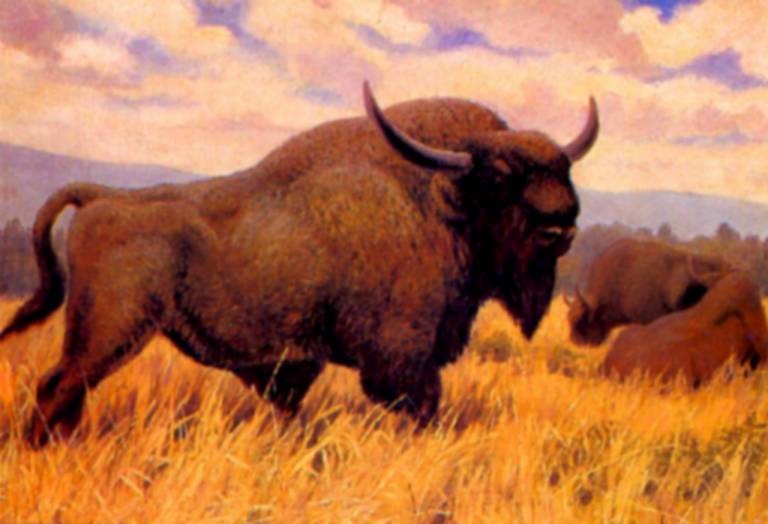Late Pleistocene Bison avoided the Ice Free Corridor between 23,000 and 13,400 years ago
7 June 2016
The Ice Free Corridor has been invoked as a route for Pleistocene human and animal dispersals between eastern Beringia and more southerly areas of North America.
 Despite the significance of the corridor, there are limited data for when and how this corridor was used. Hypothetical uses of the corridor include: the first expansion of humans from Beringia into the Americas, northward postglacial expansions of fluted point technologies into Beringia, and continued use of the corridor as a contact route between the north and south. Here, we use radiocarbon dates and ancient mitochondrial DNA from late Pleistocene bison fossils to determine the chronology for when the corridor was open and viable for biotic dispersals. The corridor was closed after ∼23,000 until 13,400 calendar years ago (cal y BP), after which we find the first evidence, to our knowledge, that bison used this route to disperse from the south, and by 13,000 y from the north. Our chronology supports a habitable and traversable corridor by at least 13,000 cal y BP, just before the first appearance of Clovis technology in interior North America, and indicates that the corridor would not have been available for significantly earlier southward human dispersal. Following the opening of the corridor, multiple dispersals of human groups between Beringia and interior North America may have continued throughout the latest Pleistocene and early Holocene. Our results highlight the utility of phylogeographic analyses to test hypotheses about paleoecological history and the viability of dispersal routes over time.
Despite the significance of the corridor, there are limited data for when and how this corridor was used. Hypothetical uses of the corridor include: the first expansion of humans from Beringia into the Americas, northward postglacial expansions of fluted point technologies into Beringia, and continued use of the corridor as a contact route between the north and south. Here, we use radiocarbon dates and ancient mitochondrial DNA from late Pleistocene bison fossils to determine the chronology for when the corridor was open and viable for biotic dispersals. The corridor was closed after ∼23,000 until 13,400 calendar years ago (cal y BP), after which we find the first evidence, to our knowledge, that bison used this route to disperse from the south, and by 13,000 y from the north. Our chronology supports a habitable and traversable corridor by at least 13,000 cal y BP, just before the first appearance of Clovis technology in interior North America, and indicates that the corridor would not have been available for significantly earlier southward human dispersal. Following the opening of the corridor, multiple dispersals of human groups between Beringia and interior North America may have continued throughout the latest Pleistocene and early Holocene. Our results highlight the utility of phylogeographic analyses to test hypotheses about paleoecological history and the viability of dispersal routes over time.Bison phylogeography constrains dispersal and viability of the Ice Free Corridor in western Canada
Peter D. Heintzman, Duane Froese, John W. Ives, André E. R. Soares, Grant D. Zazula, Brandon Letts, Thomas D. Andrews, Jonathan C. Driver, Elizabeth Hall, P. Gregory Hare, Christopher N. Jass, Glen MacKay, John R. Southon, Mathias Stiller, Robin Woywitk, Marc A. Suchard, and Beth Shapiro
 Close
Close

